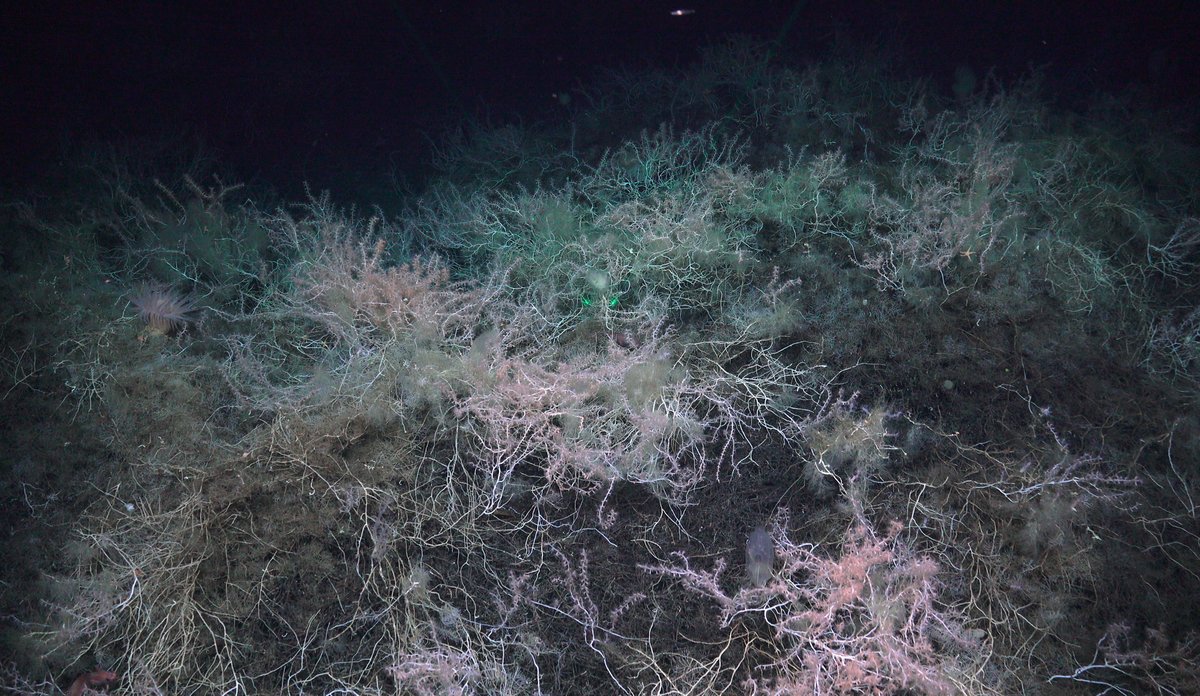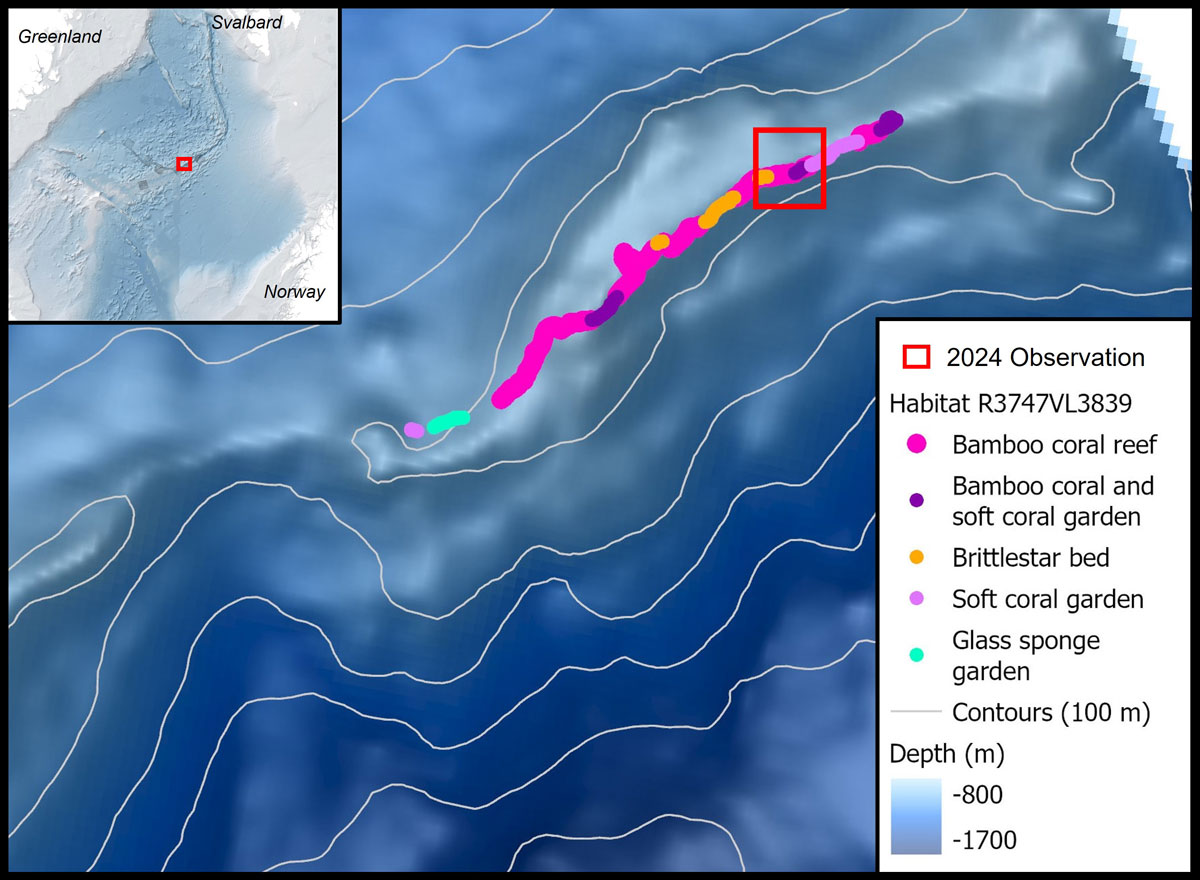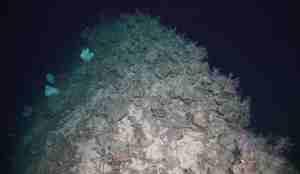The world’s first Bamboo Coral Reef discovered?

Bamboo coral
Photo: MAREANO / Institute of Marine Research (filmed with ROV Ægir6000 / NORMAR)Published: 09.10.2025 Updated: 14.10.2025
“As far as we know, this is the first time it has been documented that Bamboo Coral may also form reefs,” says marine researcher Heidi Kristine Meyer.
“If it turns out that the discovery does not fall within the definition of a reef, it is still the densest occurrence we have seen of these corals over such a large area.”

Map: Mareano
Forests and reefs of bamboo coral
They are currently on the Mareano expedition along the Arctic Mid-Ocean Ridge (AMOR) far out in the Norwegian Sea.
The researchers are mapping the seabed in the area, mainly visually recording the seafloor with the remotely operated vehicle, Ægir6000.
“We expected to find Bamboo Coral Garden, where the corals grow directly from the seabed in dense clusters.”
When the team started filming at the top of the underwater ridge, the corals appeared quickly, as expected. But then came a surprise.
“When we first started noticing the bamboo coral, they showed in patches. But then the patch became thicker and more dense and we noticed they were growing almost everywhere – on rocks, slopes, and sediment. Then we discovered that these corals also grow on top of dead corals – which is a sign that they form reefs,” Meyer explains.
When bamboo corals die, their skeletons remain, resembling thin, dried branches. In species that form reefs, it is common for living corals to grow on top of the dead ones.
“At one location, there was an opening in the reef that allowed us to measure the thickness from the bottom up to the living corals. It turned out to be 63 cm, which suggests that the reef may be old. To determine the exact age, samples from the dead corals must be examined.”
No previous documentation of such a find
The biologists on board the research vessel Kronprins Haakon have combed through scientific literature looking for anything that documented bamboo corals forming reefs – without finding any.
“As far as we can tell, this is the first documented case of Bamboo Corals growing on its dead coral skeletons – in the same way as, for example, the cold water scleractinian coral Desmophyllum pertusum. This species has built the large Norwegian coral reefs known from earlier.”
Thriving marine life around the bamboo corals
As with other coral reefs, there is also abundant marine life on the newly discovered bamboo coral reef.
“In addition to the corals, we have observed many ascidians, anemones, sponges, hydrozoans, bryozoans, gastropods, bivalves, decapods and the fish species Arctic rockling (Gaidropsarus argentatus) and Arctic Skate (Amblyraja hyperborea).
Skate eggs and juvenile skates were also seen around the reef, which suggests that the area may serve as a nursery ground for this species.
A mystery to be solved
When the researchers return to land, the work of analyzing the findings from the expedition will continue.
“We still don’t know exactly which species of Bamboo Coral grows in this area. Based on slightly different habitats, we suspect that there are several different species in Norwegian waters. We have collected samples of the species growing here in the Norwegian Sea – these will likely give us the answer,” Meyer concludes.
In addition, it must finally be clarified whether the observed Bamboo Corals grow in a way that meets the criteria to be defined as a reef.




